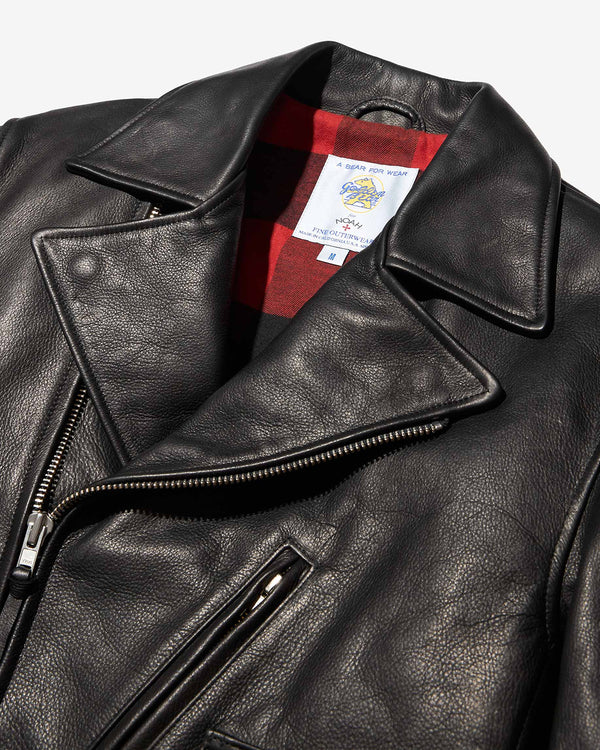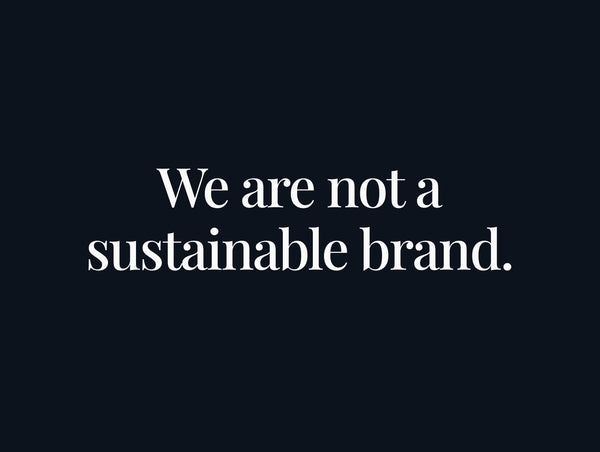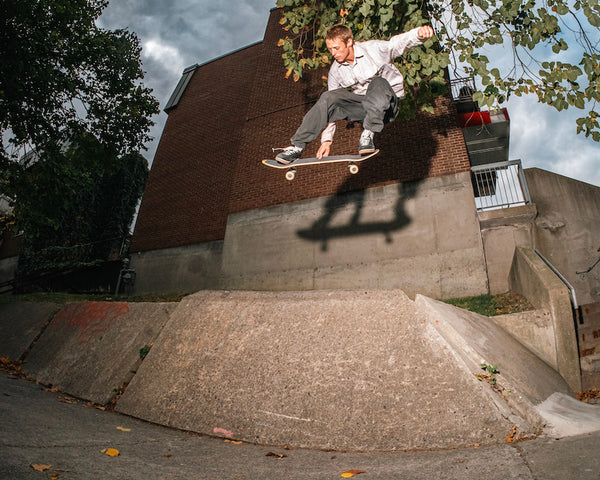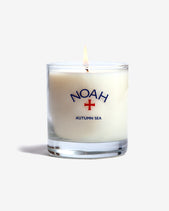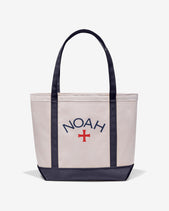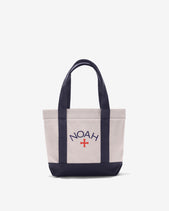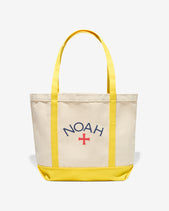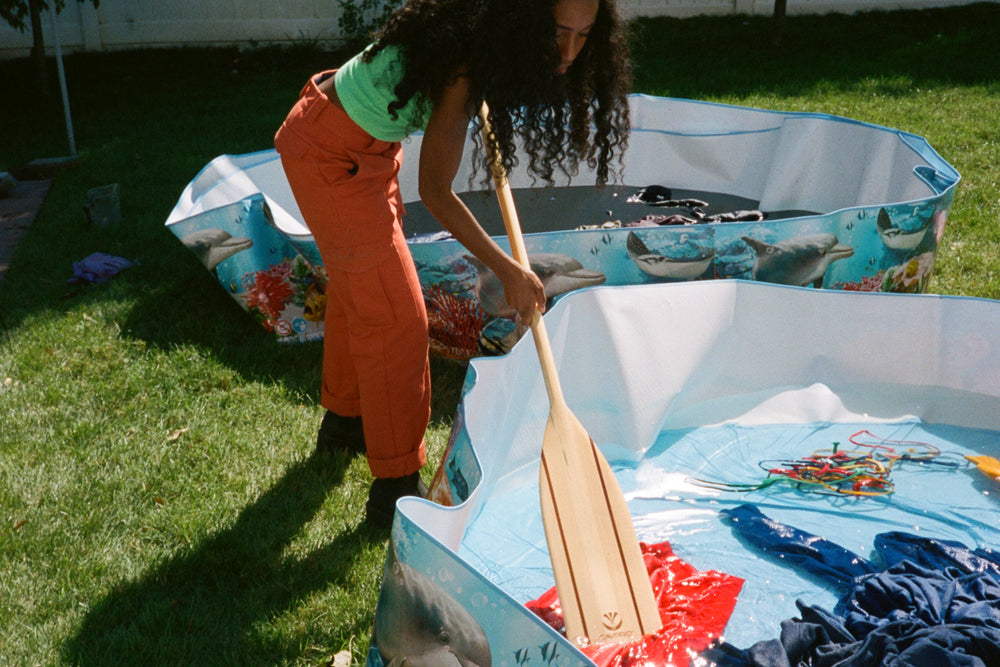
For Noah’s “What Color Are You?” project with the Whitney Shop, we collaborated with menswear designer and textile artist Jasmine Plantin to create 200 one-of-a-kind sweatshirts in unique hues. Each was hand-dyed by the Brooklyn-based artist at her childhood home on Long Island, where we caught up with her to discuss the dyeing process, her mother’s creative influence, her favorite projects, and more.
We shadowed Plantin during one of her dye sessions on a beautiful summer afternoon on Long Island where this interview picks up.

Is this the beginning of the process?
Yes, I’m measuring out the dye. First, I measure out the actual containers so that it doesn’t mess with the quantity of dye. I generally work in the basement when I’m dyeing my own pieces. Most of the process happens here.
Do these dyes your adding have to be exact?
With this project, it was kind of a ballpark, because it was such a huge quantity. I believe each hoodie was 26 ounces. I put ten hoodies in each dye bath so that’s 260 ounces—I had to figure out the correct quantity of dye based on that weight. In this case, because I’m mixing two different dyes, I’m going to have to be more exact since I want a specific color. So I’m measuring out how much this weighs, which takes time.
For this project, do you aim to have X amount of purples, X amount of blues?
When I initially put in the order for the dyes, I knew I wanted a full spectrum of color. I had the factory pre-dye in a rainbow of colors so that the base color would be different regardless of what the overdye color was. I wanted to get as diverse a collection of colors as possible. So from there, if something I was missing—if I felt like there was too much green—then I would tweak it, maybe put in a little more blue.



Is this the biggest project you’ve ever worked on?
For sure. This would be a big project for anyone—hand-dyeing is a very rigorous process. And on top of it, it’s difficult to get a perfectly even color due to the unpredictable nature of the dyes. For the most part, you should go to a dye house and they’ll do it in a really professional way, like no hands have ever touched it. But I think the beauty of it being hand-dyed is you get variation between each one, which is why this project was even possible.
When you went to the dye house, were they surprised by this project?
I don’t think they actually currently know (laughs).
—What it is?
I gave them a huge quantity of the hoodies and they were curious: “Oh, what’s happening with these?” And I was like, “You’ll see.” They didn’t realize there would be another step, but that step [the pre-dying] was crucial because if I had hand-dyed the blanks, it would have been in individual dye baths, which is not healthy for the environment. This technique is called low-immersion dyeing. You use a smaller amount of water, which is an ideal way of dyeing.
Do you have a favorite color?
In life? I really like black, which I guess is not a color. I like the absence of color. It’s also very easy to wear.
Is there a time of day where you normally work?
Really early in the morning, or really late at night. I like working by myself, which I imagine most creative people do. Also weird hours, when no one’s awake. There are less thoughts in the world or something. I’ll wake up at 4:30 a.m. and start working, or start at midnight and work until three. But I found myself working during the day for this project to see the colors better in the daylight.

What’s the next part of this dye process your doing today?
We’re putting these soda ash-soaked hoodies into the dye bath and mixing them with this color—and that’s where the new colors get created. I don’t know exactly what color is going to come out—and you get really weird colors that, honestly, I don’t think there’s a name for. So it’s been pretty exciting.
How long have you been dyeing clothes?
I guess seriously, within the past two to three years.
How did you get into dyeing clothes?
My mom. She’s been doing it forever. She does Shibori dyeing, which is a Japanese technique of resist dyeing—and she’s been working with that technique for years. I’ve always been around her doing it and got deeply interested within the past few years.


Where did she learn?
She took a few classes, but a lot of it she’s learned on her own. She has a million books on dyeing, whether it’s traditional dyeing from West Africa, like Sierra Leone, or Shibori from Japan. She’s interested in how different cultures use dyeing and their respective dyeing techniques.
What kind of advice has she given you?
Literally everything—teaching me the correct formulas for the dyes, which dyes to use, and which fibers are best.
Have you ever collaborated on something together?
Yes, actually I’m a menswear designer at Outlier and we just did something that will be out soon. I’m always around her when she’s doing really interesting, intense projects, so I take inspiration from that as a designer. But my artwork is textile-based. Hold on—I just need to figure out one calculation.
Where is she from?
My mom is from the Bay Area, but our family is from New Orleans. Kind of all over the place, in a way.

What made you decide to get into this two year ago?
I have a project where I dye T-shirts, which, to me, was the best way of expressing this idea that I had based on water and the universality of it—and people within the Caribbean/African diaspora and their relationship to water. Using these different dyeing techniques and working with water—and the watery effect it makes with the resist dyeing—sparked my interest in using it for this project.
So water is the jumping off point?
One hundred percent. I grew up in Long Island and my dad is from Haiti—these two islands that are very different culturally but have water in common. Going to Long Beach was a huge part of my life growing up, but also going to Haiti and my dad’s hometown of Jacmel, which is also a beach town.
Has Haiti inspired you artistically?
Yes, definitely. I did a big project in 2017 and 2018 in which I worked with artisans in my dad’s hometown, as well as Port-Au-Prince. Different beaders in a very creative country. My dad’s hometown in particular is known for papier mache, making these intense masks for Carnival. I’ve incorporated a lot of those techniques into my projects, whether it’s learning them myself or working directly with the artists.
Can you talk to us more about the beaders?
Within the Vodou religion, they have beaded Vodou flags—they’re really ornate and heavily embellished with sequins and beads. You have different artists, one of which is Jean Baptiste Jean Joseph, who does really intricate, intense flags. So I ended up working with a few artists down there and did my own interpretation of them. But it was important for me to work with the people I was learning from.
Do you have a signature style or piece?
It’s an approach more than anything. I really like history, and I really like comparative literature, and looking at how different elements of cultures relate to each other. A lot of what I do is incorporating texts, history, literature, or folklore from the Caribbean—but, lately, it’s been the overall African diaspora—into pieces that are contemporary. My T-shirts are embroidered with the word WATA, which means “water,” and it’s used in the Caribbean and West Africa. It’s a tongue-in-cheek play on different sports brands. People always ask, “What does that mean?” So it’s a bridge to information that is important for people.
Any advice to someone who wants to pursue dyeing or anything along your lines of work?
It’s a lot of hard work. It’s very labor-intensive. But it’s definitely rewarding and cathartic. A lot of waiting and stirring and waiting and wringing out. There’s a peacefulness to it. If you’re getting started, do research, like anything else.

What’s your favorite part of the process?
I like mixing the dyes the most. Because when they’re in their powdered form, it’s really muted, and you don’t know exactly how they’ll look when they hit. Not only the water, but also the fabric. In some cases, the dye might be different quantities of two primary colors mixed together. You’ll see yellow particles and red particles, which might make a weird pink or something. It’s interesting to see the dye go through these stages.
What were you the most proud of?
The quantity of work was something I had never done before, so it was logistically exciting to see if it was possible.
But also my previous work with artists in Haiti. To have pieces that represent Haitian history, folklore, and literature from different eras, and be able to work with other Haitian artists was a really rewarding experience.
Any last words?
I don’t know. I guess, thanks guys. This was awesome.

